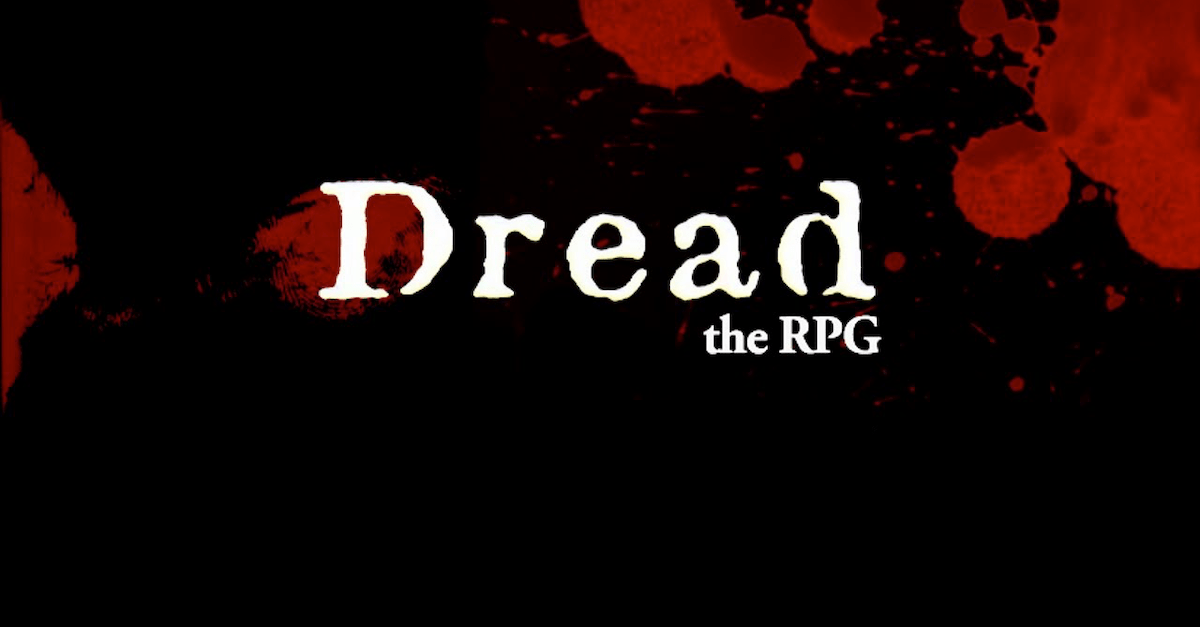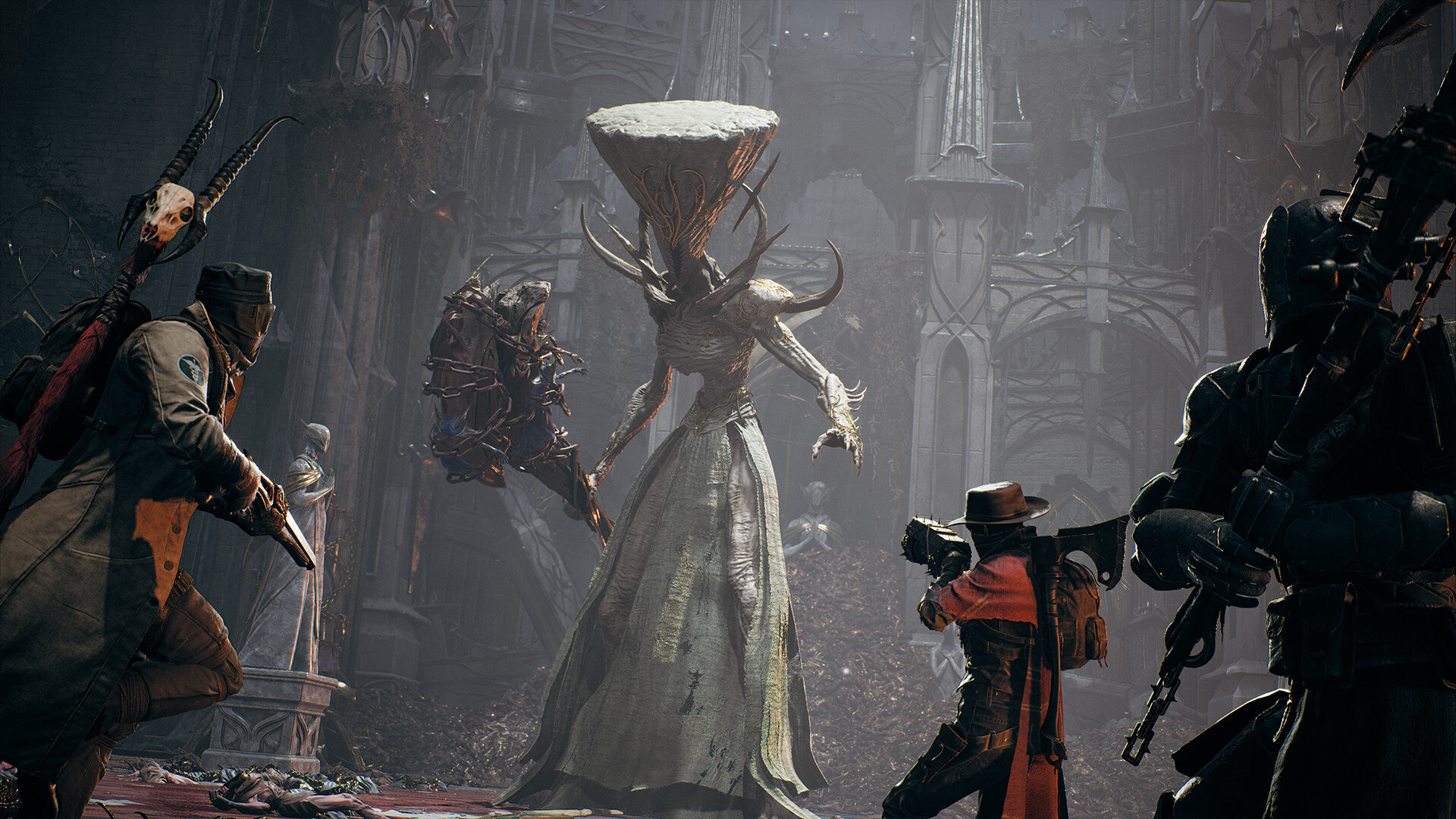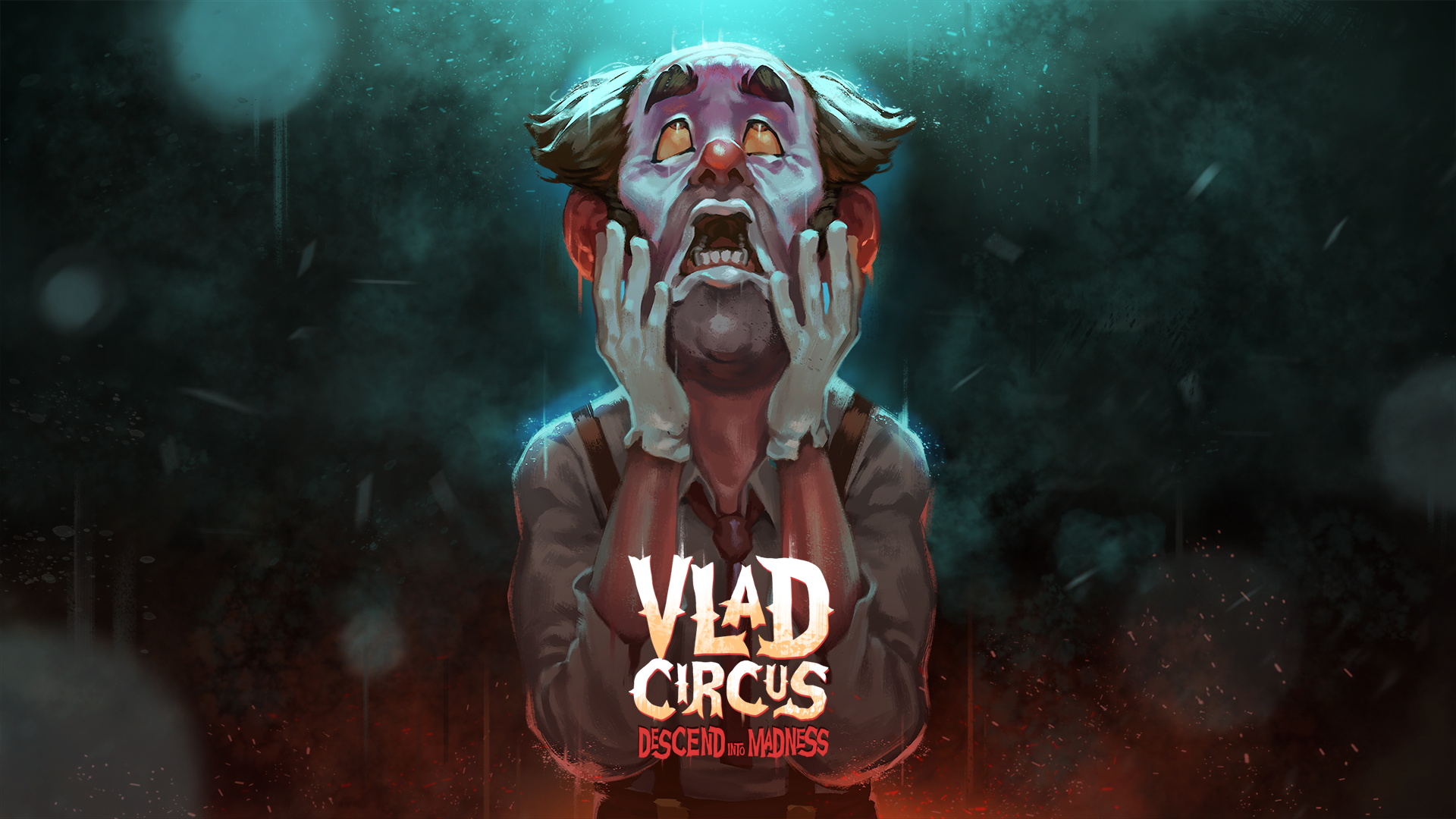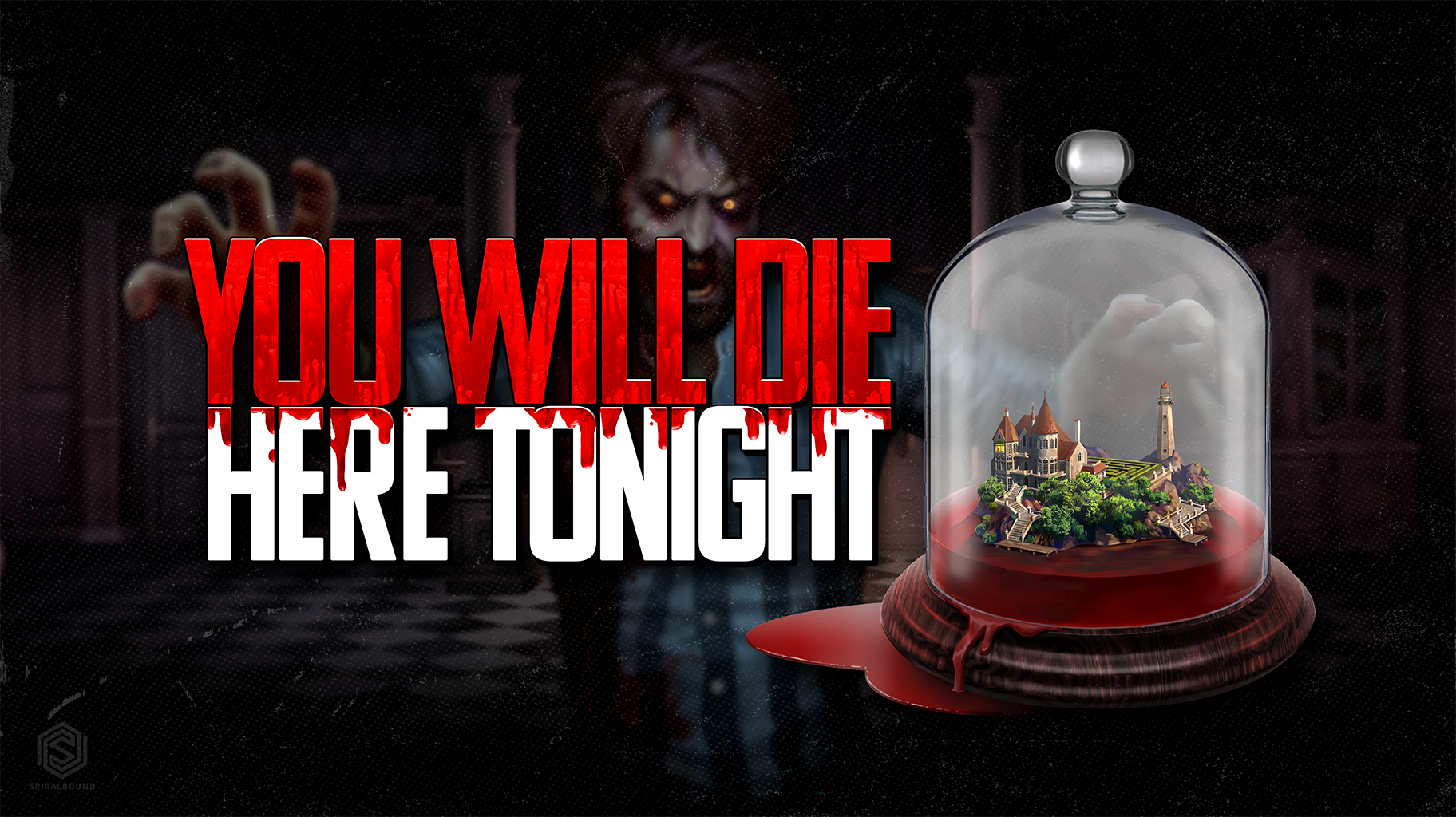
DREAD Review – Towering Fun for Horror Fans
The metal hull of the space station creaks and moans as you step out of your transport pod. It’s hard to make much out through the thick fog of dust. You run a scan, but for some reason, your tech is on the fritz. This wreck isn’t going to salvage itself though, so you press on. On a hunch, you run a scan of the dust itself. Despite the warmth of your atmo-suit, a shiver runs down your spine. The dust is almost entirely organic: tons and tons of flakes of irradiated human skin. There must be enough particles here for an entire crew. But then… where are the bodies?
Convention has it that if you want someone to like your idea, you need to be able to explain it in a sentence or two. Take for example, apple pie. Apple pie is a great idea. You fill a pastry crust with sliced apples, some spices, and an absurd amount of sugar. Bake it a while and then eat it. It’s the best.
The tabletop RPG Dread by Epidiah Ravachol is a great idea. It’s a game where you play characters in a horror story. When a character tries to do something that might go poorly for them, they pull a block from a Jenga tower. Every time the Jenga tower falls, a character dies.
How fucking brilliant is that? A person could have never laid eyes on a D20 in their lives and still understand what Dread is. My playtest group needed exactly zero encouragement to try it out. Saturday rolled around and they arrived in force, ready to dim the lights and get busy playing.
As a ruleset, Dread doesn’t get much more complicated than what I’ve already described. Characters can choose to abandon a pull and instead fail at their task at any time before the tower actually collapses. There’s also some specific rules about how you’re allowed to pull from the tower, which coincide pretty closely to the normal Jenga rules of play. Also, players can opt to do a voluntary pull to shore themselves up narratively. For example they might spend extra time checking an old electrical generator for shorts before turning it on, or take care to slam doors behind them as they flee the slavering thing in the dark. The voluntary pull shows that the characters are using extra effort in their task so it succeeds above and beyond what it would have otherwise. It also sometimes gives them more options to work with when trouble really comes calling later on. Finally, when all hope is lost, a player can choose to voluntarily knock over the tower and sacrifice themselves. They still die, but their character succeeds at what they were doing, and makes a dramatic and heroic exit from the story.
Character creation is a matter of deciding on a setting for the story and then filling out a custom questionnaire. Pulling Jenga pieces doesn’t require stat blocks, so coming up with a character concept is pure, narrative delight. At first I was a little intimidated by the idea of asking questions that would prompt players to come up with interesting characters. The Dread playbook, however, is brimming with ideas and advice. In addition to the chapter dedicated to the topic, there’s a list of interesting questions along the bottom of every page of the book. They’re everything from “How did you win the only brawl you’ve ever been in?” to “How are you feeling today?” or even something as pointed as “Why are you planning to leave the Empire as soon as you can after the Emperor dies?”
I ended up enjoying the character creation process way more than I was expecting to. Because of the total control over the questions, I could direct players into roles that fit the story they were stepping into, as well as give players huge amounts of agency over the characters themselves. The nature of the Jenga tower as a conflict resolution mechanic also completely did away with any question of building a “balanced” character. All pulls are equal in relation to the characters, so as long as everyone was consistent with the tone and genre we’d agreed upon, it didn’t matter who could take who in a fight.
For example, one player had the question, “You suffered some sort of injury and now have a cybernetic prosthetic. What do you miss the most about having your original body part? What is the best part of having a prosthetic?” He slid his questionnaire over to me a little sheepishly and asked, “Is it ok if I have cyber eyes with heat vision and so forth? Is that cheating?” It was not cheating and it worked beautifully in the deep space horror scenario we were about to embark on. Low-level radiation on the seemingly-empty space station was messing with all electronics, so we had a great moment where the player couldn’t tell if he was seeing movement in the darkened hull of the ship, or it was just bursts of static messing with his eyes. It was a great, early moment of tension in the story almost entirely of the player’s own making.
Since the rules are pretty easy to understand, most of the Dread rulebook is dedicated to helping the showrunner come up with a compelling horror story. It has entire chapters dedicated to different subgenres including suspense, mystery, the supernatural, and gore. As a side-note, if you have any inkling that you might want to write your own horror short stories or novels some day, I recommend giving chapters six through eleven a read. There are also a lot of practical tips for preserving ambiance, tone, and mood at the table, which is critical to a horror story.
I used one of Dread’s pre-built adventures for our playtest dubbed, “Beneath a Metal Sky”. It’s a classic monster-in-space type scenario. I used the provided questionnaires and then tweaked them a bit, so character creation took about a half an hour, all told. The story began with the crew of a spaceship that wasn’t lost, per se, it just wasn’t sure exactly where it was in relation to anything else. The engineer’s player had put down on their questionnaire that they’d once accidentally hooked up the navigation to the wrong subsystem, and I, as the one running the game, decided that “once” was about a month ago and the ship still hadn’t recovered from it.
They came across a mysteriously abandoned colony-sized craft and boarded it to try and track down some star maps and maybe take on extra supplies. It was pretty easy to get players to make pulls early on as they explored the abandoned vessel, and the players even started making some elective pulls themselves, to lock down giant floating metal storage containers and to try and get the ship’s power back on. The crew got split up (a classic error) and we all enjoyed watching the situation rapidly devolve as skinless, humanoid monsters appeared out of the ductwork and all hell broke loose.
One of the interesting effects of the Jenga tower on the game is that the early-game risk to the characters is very low. Any failures early on are going to be players narratively not catching something, rather than any real danger of the tower coming down. Except in the case of extremely shaky hands, the players know that they’re not going to die, no matter how desperate the situation may appear. The flip side of that is that after a certain point, attempting literally anything is a matter of life and death. Being genre-savvy helped my players position themselves well narratively, but ultimately, it can’t save them when trouble comes calling.
One cool element of there being a physical, teetering tower was that players literally started gearing up to physically save each other from disaster. One player had the character of the doctor and whenever his in-game crush started to make a particularly shakey pull, he was right there next to her, ready to knock over the tower himself if it looked like it was about to collapse.
As the finale of our game drew near, the Jenga tower was an excellent built-in source of tension. We hit a point in the last half hour of the game where people were afraid to breathe within a ten-foot radius of those wooden blocks. Everyone was completely immobilized, and you can bet no one was checking their phone. Ultimately, our little crew of space misfits managed to hold off the monsters long enough for their shuttle to come pick them up. They escaped back into space, to continue their search for home. You could hear the collective sigh of relief as the game ended.
We had a lot of fun playing Dread, but there were a few hiccups. The formatting of the rulebook could use some tweaking. If you grab yourself a copy, I recommend going the carbon-copy route since the questions running along the bottoms of the page get broken up by the PDF in weird ways. The physical copy of the book also had some oddities. The margins between the edge of the page and the text are tiny and there are several strangely-formatted sidebars that can make reading it a bit of extra effort. It’s nothing game-breaking, but it was an irritation.
As cool as the Jenga-tower mechanic is, it also comes with certain limitations. The tower adds a sense of tangible danger to the story, but it also eventually became the primary source of tension. In other words, the tower and its wobbliness upstaged the fiction in the final act. Players were still interested in the story in that they wanted to find a way to escape before the tower collapsed, but the fear was centered on the physical fact of the tower, not the story itself. This could probably be mitigated by my continuing to refine my storytelling skills, but I don’t think that will necessarily annul the problem.
There’s also a question of pacing. We ended up going the entire session without anyone dying, so the tension continued to ramp up throughout the entire game, but I wonder what would have happened if the tower had collapsed at the two-thirds mark? You pull pre-pull extra blocks every time after a character dies to make the tower a bit more wobbly, but even with that, I don’t think the threat of the tower would have been terribly eminent after the initial fall. I could have probably started calling for pulls at a rapidly increased rate to ramp the tension back up afterward, but the pacing still would have taken a hit.
Finally, though not a fault of the game design itself, there is a physical limiter on Dread that isn’t present in other tabletop games that’s worth noting. Anyone who has a hard time with fine muscle control is going to find this game less accessible than they would a traditional dice-rolling ttRPG. If you pull out Dread at a party sometime, be conscious of its accessibility to your guests.
Ultimately, I had a lot of fun playing Dread and my players all said they’d be interested in playing it again sometime. The core concept of the game is simple, and the execution is a lot of fun. Give it a try, and let me know how it goes.
Happy gaming, everyone!
The post DREAD Review – Towering Fun for Horror Fans appeared first on Dread Central.




